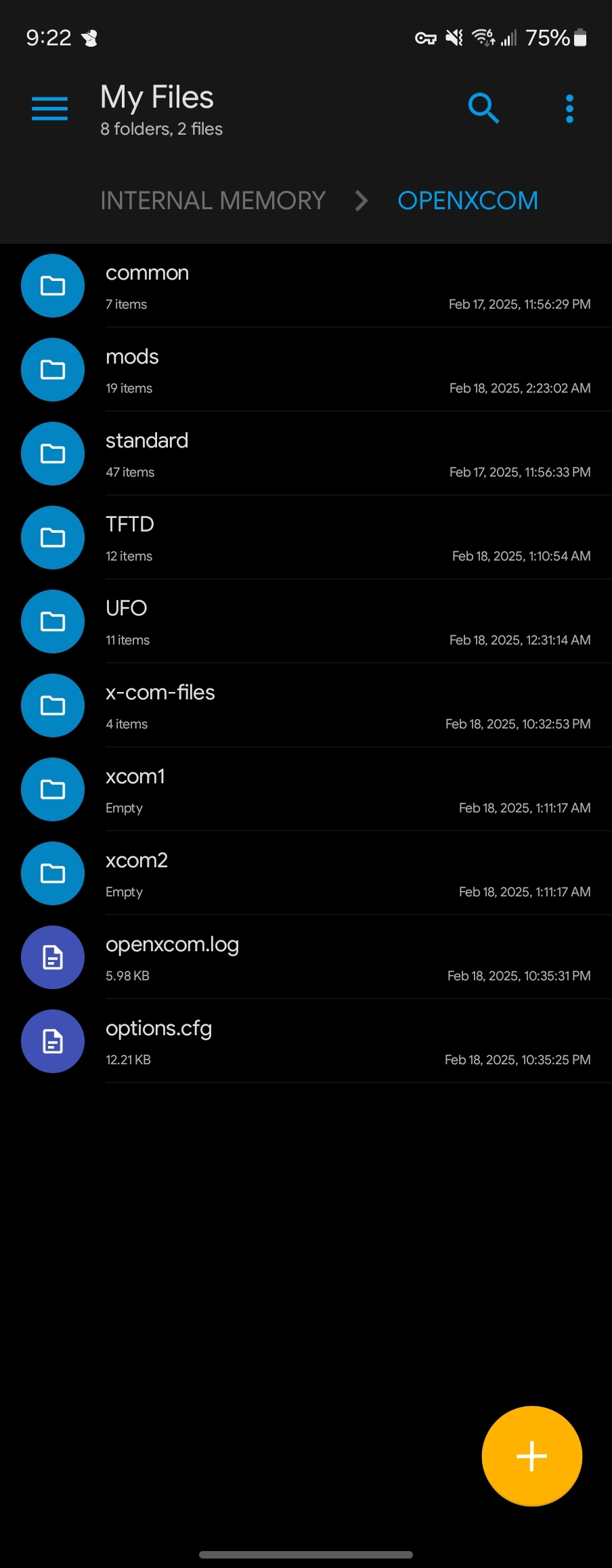I have a mac I use for some specific tasks. I’ll agree the Apple is, ehh, Apple.
But mounting network fileshares is dead simple. My SMB share pops right up, authentication works fine, the user interface for it is fine. If I wanted to use it remotely, I’d just export it over my tailnet.
’sshfs’ is good for short stints of brief use, but ultimately it breaks on a protocol level as soon as your socket dies, on any OS.
Both the default network mounting options in Gnome and KDE won’t let applications access the network drive. You have to mount using SMB4k or cifutils if you want application access. I’ve not used MacOS in over a decade but that functionality works seamlessly in windows for SMB shares. It’s honestly a minor reason (among others) I went back to windows.
Might be something polkit-related? But yeah, you are right about it not working.
Unless supporting a Windows client is an absolute must, I’ve found NFS shares to be far preferable. I’ve experienced quicker speeds, fewer disconnections, and less corruption. The only downside I’ve encountered is the client hanging if the server goes down, but there are solutions to that.
I will admit I’ve never done anything beyond simple network shares with NFS, so it’s possible that there are use cases (besides involving Windows, by which I also mean Active Directory) is better.
I run both NFS and SMB shares. My SMB shares for Windows (very specific application) and MacOS, and NFS for my Linux hosts.
I’m kinda on the fence between them. Both work fine, but the devil is in the details.
Yeah, my personal experience is my Synology drive is easily available through Finder ¯\_(ツ)_/¯
<rant>
Love how this meme once again shows a Linux terminal command (that only works on specific distros) instead of what most users would want (which would work on almost any user-friendly distro), the button in the File Manager to add the network share to your left sidebar.
Somehow people still believe CLI commands are superior, meanwhile people who just want to get Linux-unrelated shit done (that isn’t IT-related either) don’t understand what exactly happens here and won’t be able to permanently add the share to their file browser this way. Y’know, the way most people would use it in their daily workflow.
Where Apple fails in proper software integration, Linux fails in feature communication. Instead of properly integrating features (Apple) or providing/focusing on doing things intuitively and accessibly (Linux), both want the user to start thinking their way. And I fucking hate it, it prevents Linux from becoming more popular.
</rant>
You can click your way to the same feature in Nautilus. No need to even see a terminal.
Yeah. You also can edit mounts via GUI tools instead of manipulating fstab. You can configure shares without opening smb.conf. You can do all these things, now if we would just communicate how user-friendly a Linux distro can be that would be nice. Right now it’s still a wild goose chase to find instructions how to do things graphically and therefore accessibly and more safely, as every search first and foremost results in tons of (often time different) CLI commands. And there are too many in the community who counter with disabling or elitist bullshit, as if someone who isn’t into RTFM for every click somehow can’t be allowed to flip a switch. It’s exhausting to fight against these sentiments, especially now where apparently a lot of people suddenly realize that Microsoft and Apple might not be the best idea to trust. People who just want use and trust their computer.
I’m with you on this. I think a youtube / peertube channel providing GUI only tutorials could do quite well and would help to further the linux cause
I’m too lazy do it, but someone should
Yeah, for Windows vs Linux on servers the battle is already won. For desktops it’s more Windows vs GNOME, Windows vs KDE, Windows vs XFCE, etc.
My biggest problem with Linux is that there are 8 ways to solve any problem. Some of these are distro specific, and all of them are THE definitive way to do it depending on who you ask. This comes up for me most when I want to make a change to something or do it again on a new machine.
For adding another network drive, for example I think oh it’s called samba right and open the terminal and type in samba help. The response is: command not found do you want to install “samba-dc”? Okay so not samba. Oh that’s right I edited a file. Now was it smb.conf? No wait maybe it was fstab.
It is getting easier as I get more familiar, but I have to wrap my head around every new thing that I want to do. It’s no wonder people don’t have the patience.
I know this is just an example, but it is kind of funny.
User somehow sets up SMB shares on their network. Then is confused by the client?
But that’s what I mean, right? I found a guide on how to edit a config file, then after I’ve forgotten how it went, I try to run the client that does exactly the thing I want. I don’t have it installed, so I must not need to, but good luck finding the original guide. Idk, I just spend so much time feeling confused trying to get my dumb little project homeserver to do what I want.
I am not sure what to say, but maybe use something that already has done the work for you? I set up Open Media Vault 20 years ago and it has SMB shares built in. Ran it for 15 years with little to no intervention on my part.
Also, highly recommend keeping documents of how you set things up, including a link, if not a copy of the guide and the how and why you did what you did when making your own server. We do it on enterprise systems, I do it on home systems (if building from scratch).
That’s what you get for dabbling with computers. Of course there’s many ways to do one thing. There’s many ways to do one thing with Lego, for fucks sake. Do you really expect computers to be simpler?
Well, GUIs are even more distro-specific, so it’s either generalisability or user-friendliness. It doesn’t mean that guis don’t have the option.
Somehow people still believe CLI commands are superior
Something that only a pure enduser would say.
this meme once again shows a Linux terminal command (that only works on specific distros)
sshfs only works on certain distros? Oh you mean the apt install part.
the button in the File Manager to add the network share to your left sidebar.
I just browse to the network location I want and right click on the view in the file manager and select “add to places”. It will be there on the sidebar until I remove it. Yes it is there after a reboot.
But sshfs also works across the internet…quick and dirty file access from anywhere in the world. If you can SSH to a machine, you can get a mountable file system.
sshfs also works across the internet…quick and dirty file access from anywhere in the world.
I almost said that. It was my first thought. But then the people discussing it seemed kind of focused on local networks so…
How is
sshfs source targetdistro-specific? That would work anywhere. What would confuse the user is GUI, because we have about 5 major DEs and 10 major file managers that usually don’t even work with sshfs without extra plugins.We also have ~5 major package managers (which all work differently) with usually 20 different package names depending on the repo, and you chose to ignore that part.
I ignore that part because it doesn’t pose a problem for the user. If you’re on a distro X, you know what command to type to install a package using its package manager. For the same reason, OP didn’t care to explain how to power on your computer. Or do you expect a meme to be a comprehensive guide on how to install sshfs on all major distros? Really? Maybe the real problem is that some people don’t understand what a meme is.
You clearly didn’t understand the point of my original rant. Also no, people don’t necessarily know how to use the package manager via CLI. Tools like Discover and Gnome Software exist for a reason, and people who feel more comfortable using them (instead of a CLI, which is a literal black box to common people) get harshly ignored by people who argue exactly like you. This is about accessibility, and these exact discussions are the reason I’m pissed.
Oh, I understand. I just don’t expect a meme to solve the accessibility issues. People do use the CLI, they find it convenient, and there is no reason why they can’t make a meme with terminal commands. What I don’t understand is why you act like Linux or OP owe you something. We already have macOS, which offers a fantastic user experience, and we have Windows, which provides some middle ground. Let Linux be Linux. You can also create ‘memes with more accessibility’ if that’s what you think the issue is.
Dude, I just ranted. I don’t expect this meme to do anything, neither does anyone owe me something. It just showed this general vibe in the community about what they think is “simple” I had the desire to call out here because I think it can be harmful to common users. So I engaged in discourse about this aspect. If you see it differently that’s fine, we probably won’t be friends. Outside of jokes (which I thought I made clear by specifically marking it as a rant) I will keep working on changing desktop’ Linux public image away from only-for-CLI-nerds towards a potentially user-friendly option for everyone (potentially = the distros made to be like that) even if you don’t like that.
Whatever you think you understand, it certainly isn’t my point. “Let Linux be Linux” makes me question whether you even understand how divers “Linux” is.
I’m not going to stop you. I just doubt that ranting under memes is going to leave a dent on the universe.
deleted by creator
I use nfs shares for this use case.
me too but the connection is tunneled in an ssh channel so it’s similar
NFS is insecure out of the box so typically tunnelled over TLS (not seen it done over SSH since why bother if there’s SFTP?).
I’d rather a desktop app or a terminal app for remote file systems than install a kext on a mac. Like, kicking stuff out of the kernel was an excellent idea.
FUSE would knock over my old mac anytime a transfer was longer than an hour or two. Not to mention the vulnerabilities poorly developed or maintained kexts introduce.
NFS over TLS exists, but typically you use kerberos for such deployments. Bit too much for home use though…
Eh, works for me for home use. I just have it running on the same machine as the NFS server. The only thing that bothers me is that I can’t use normal Kerberos for SMB, I’d have to set up Samba AD. Boooo
I even managed to make it work with just mDNS as I’m currently in a horrible network I don’t control.
You’re not running an entire Active Directory domain in your home?
I’m a bit of a casual
for that I then just use VPN/Wireguard if I really need to access my home server remotely off-site.
NFS is insecure out of the box so typically tunnelled over TLS
Set up Kerberos, it will also give you correct file ownership and then you don’t need any additional tunnel.
Running both Linux and macOS on a daily basis… They’re both completely competent, and have basically the same amount of rough edges once you dig in and get your hands dirty. If you find one of them impossibly difficult, it’s a skill issue.
Lol. Yeah.
Yes. I run PopOS and Hackintosh on my Thinkpad, use the new M4 Mac Mini as my main desktop (with hopes of Asahi Linux support in the future), and run unRAID on my completely overpowered Ryzen 5900x NAS, where I have a Win10 LTSC VM for the rare occasion I need to run software that only runs on x86 Windows.
I would prefer to only use Linux if I could, but MacOS is very competent and far superior to Windows in my opinion. I have never had any issues accessing my unRAID shares on it
My SO has a MacBook, and I thought no sweat, I’m sure I can just autofs or something onto the NAS so that the photo storage is always there. I was wrong. Why dies it have to be such a pain? So clunky, so unreliable.
Why dies it have to be such a pain?
Intentionally bad, if you buy Apple you’re supposed to use iCloud and never, ever leave the ecosystem.
I mean, AutoFS itself can be pretty painful
Because SMB works reliably on macOS. Never had an issue. I also prefer Cyberduck and actual sftp so … take my word with a grain of salt.
My issue wasn’t SMB, but automounting the share. As in, turn on wireless, the share is available. I’m coming from Linux and am pretty clueless with MacOS.
I have this problem with Android. Google has turned the filesystem into unusable garbage, so you’re lucky, if you can launch a gallery app with a file path and it allows you to actually go through the images in that folder.
And of course, that’s with a local file path, so the situation is completely hopeless when your images are on a network share. Unless the gallery app itself implements the network protocol, you’re out of luck.
Wanna guess how often that happens? Yeah, it simply doesn’t. Even if it’s theoretically just a library, when you build it into the gallery app, that dev has to continually maintain and test it.I love how android uses ext internally, but doesn’t support ext drives natively.
I can’t even mount my Android storage to my computer without some unreliable MTP FUSE program.
Thats an interesting server. Also, did you mean garbage or garage?
SSHFS actually works perfectly on android, just needs root. Here’s the app I use.
It’s funny how the README calls it a “VERY bad solution”, but so far it’s the only remote filesystem tool I’ve seen on android that could be described as anything close to usable.
Hmmm interesting. I’ve never had issues with that. I just mount it once to a mountpoint in my shared storage and it just works. Probably a ROM-specific thing.
@renzev for me, /mnt/runtime/default is not enough, because some apps using /mnt/runtime/read or /mnt/runtime/write as storage.
Solid Explorer on Android is great, supports all kinds of protocol connections
I mean, thanks for the suggestion, but it doesn’t seem to be open-source, so that’s a hell no from me…
Fair enough, I’ve been using it for like 10 years 🤷♂️
You also didn’t specify anything about open source in the original comment lol
Well, it was more of a rant, I wasn’t exactly asking for suggestions. But you making a suggestion was perfectly fine anyways. I do just have opinions on proprietary Android apps.
Ah, someone with experience with Solid Explorer. I’m hopeful you might be a power user.
Long ago, I looked into it, but was dissuaded because the details views therein seemed to waste vertical whitespace. An absurdly small font, close to the bottom of the icon to maximize empty vertical space, was used for details (at least datestamp, I think).
Is that still the case? Have they added a method to increase the font size of the details without also increasing (or perhaps simultaneously decreasing) the filename’s font’s size? I couldn’t find one when I tried it last.
If there’s an interview with the creators wherein they extol the virtues of vertical whitespace within an item, or if some reviewer has done that for them, I’d love a link or two to read about it, see what I’m missing.
I’m sure the functionality is great. It’s the presentation I didn’t like. But perhaps there are unintended consequences of a compact layout…
Haha depends on what you mean, this is the default view I believe just zoomed out (pinched, rather then swapping to the compact view, which gets rid of the timestamp)

Removed by mod
It’s “sudo yum”.
Removed by mod
yum is fedora, pacman is arch.
We call it dnf now. *Tips Fedora and leave
Made me giggle. Thank you
Removed by mod
yum’s old and busted; dnf’s the new hotness
Imagine using pacman instead of emerge
Imagine using emerge instead of cmake
Wait, is linux gendered or pacman?
Removed by mod
Ah, you’re all good. I feel rightfully shamed by my past self from giving up slackware in the early 2000s to go almost exclusively Ubuntu specifically for the package manager. I used to would have felt my adult self was a fake linux kid as well.
Removed by mod
My past self was also and insufferable piece of shit in a completely different way that my current self is. I don’t believe it is our use of linux that drives this particular personality trait as much as the underlying humanity that we share.
Removed by mod
I feel that what I wrote and what you interpreted are very different things, that having been said I sincerely wish I had written what you’ve responded to.
Yeah this post is bull shit!
I just spent the last 2-3 hours building SSHFS from source for Proxmox & Debian, it really sucked!
Ps: Fuck gLib2.0
Wait what, why? I’m out of the loop. What’s up with Proxmox and glib 2.0?
Sounds like self inflicted pain. If you absolutely needed the latest why are you simultaneously running debian again?
Sounds like self inflicted pain.
It most certainly is unfortunately. gLib2.0 is apart of the Debian main repository but for some damn reason I couldn’t pull it with apt.
Resulted in building it with meson but had so much trouble.
Ya you are holding it wrong. If it wants a different basic library version than you have available to you then the solution is never ever to somehow go and get the library this will never ever ever work and will only succeed in breaking your entire system as all the other stuff now doesn’t work with the new library.
Personally I would put
doas xbps-installbut I like to make my memes relatable to the wider linux community ;)Yay!!
Wouldn’t you just use AFS, CEPH, NFS, or 9p?
I really don’t want to be that guy, but isn’t SSHFS (FUSE) actually a terrible option when compared to an actual file-system? MacOS isn’t really missing out on much there.
The most painful part of MacOS (which makes it downright unbearable for me) is that system configuration files are XML. It’s an absolute nightmare.
SSHFS uses SFTP which is built into SSH, so no server to install. Its not as fast as NFS, but requires no setup. For something small like a home lab, that is a big advantage.
This. Surely not the fastest way to get content from/to a remote computer, but it just works as soon as you enable sshd.
SSHFS is secure and works well over the internet. If you only want to access it over the LAN, then NFS is a much better option.
For some (most?) of us, we don’t have ssh access open to the world, so everything is over a VPN. So I can just use NFS over WireGuard which afaik is fairly secure, if you trust your endpoints, and works great over the Internet.
I’ve never had good luck with NFS on a high latency connection. SSHFS still works fine even if the server is on the other side of the planet.
NFS should work well enough on high latency connections - it was designed back when it was fairly uncommon to connect to a server over dial-up.
It’s definitely possible that SFTP is more optimized than NFS though.
SSHFS is very mature. I use it for administering several home servers.
It works so well that they added a mode where some users can have SFTP only access (without SSH shell) so you can set up shared directories. It was easier to set up (for me) than CIFS or NFS.
I just wish both these platforms would get some modern remote desktop support built in. Remoting into Mac/linux vs Windows desktops feels like dealing with tech from completely different time periods.
Thank god most of my Linux remote work is ssh on the cli.
You… want remote desktop on kernel level?
The protocol, yes.
Odd, I specifically find the concept of this disturbing.
Yeah, I know suggesting UI and user experience improvements spooks Linux diehards.
it may be the current political climate of the country I’m living it, but kernel level remote access makes me feel inherently less secure. Don’t get me wrong, I never intend to give up my dumb terminal as my only way to use my computer either.
Sure. It risks introducing vulnerabilities. It needs to be implemented very carefully. I think a built in version, with security in mind, is a lower risk than relying on users to implement their own solution, and risk them picking the wrong one or setting it up incorrectly.
Every user convenience introduces vulnerabilities. The users are the weakest link in every system. It’s a balancing act, and one I don’t think Linux has ever balanced well for usability. But server core has shown there’s no reason for the service to be on by default. There’s much more dangerous Linux features that are switched on by default configs, like root logins and password authentication, so let’s not pretend Linux has ever taken a hard line on this.
I wasn’t trying for any ‘gotcha’ moment or anything, my paranoia is just particularly high these days. I apologize if my open rambling about my personal distrusts has caused you undue stress.
This doesn’t work without a grapical session tho.
Yeah, I know. Same on Windows Server Core I believe, but the option is in there to enable it.
I admit I don’t know the technical details well enough. But I know the user experience difference is ridiculously bad trying to remote into Linux. My workflow now is mostly using my tablet and remoting. If Linux had better Remote Desktop protocol, it’d also be my go-to for a desktop experience. Right now, if I can’t use the terminal app for something, I’d rather just remote into a Windows box than feel like I’m using a computer from the 90’s with Linux Remote Desktop options.
In the old days we just used X over SSH (xforwarding) and only sent the single application over, no desktop need by running on the host (well technically client as X is backwords).
I know the user experience difference is ridiculously bad trying to remote into Linux.
It isn’t. There are lots of tools for this, including using RDP. It is really easy actually. It is a graphical front end tool on KDE.
The “bad” part is that the user must already be logged in and the desktop opened because that is how linux works.
Speaking of modern: I usually just use moonlight for streaming and sunshine for hosting between machines that are on the same network because it is so simple and available in Fdriod for Android devices. You can share apps or the desktop.
You CAN configure wake on lan and run a script to auto log in a user (with moonlight) if you wanted to use it with a machine that is off, but I can agree that that is a few extra steps.
I remember in college we had access to a Unix box via these computers that remoted into it. I don’t know the technical details, but I was able to log in with my account and it was presented as a GUI on my end. We used No Machine as the client if that’s relevant. I wonder how something like that can be set up.
I actually just tried moonlight/sunshine this past week for gaming, and I was disappointed. The interface is missing critical components that Steam link has. Makes it almost useless unless you have a keyboard attached in many cases.
But I hadn’t thought of using it for Remote Desktop into Linux. Sounds a lot better than No Machine. Thanks for the tip.
What is missing? I have had no issues with it.
But you can use Steamlink as a remote desktop tool too. I do it all the time with my steamdeck in desktop mode.
Those names. Moonlight is a gui for ghostscript for easy pdf-compression, too.
Windows Server Core still has a window manager, just all it does show a command prompt very similar to the one in the usual Windows recovery environment.
K. And what massive vulnerabilities have been introduced by that? I’ve seen no articles or sources backing that claim.
I never mentioned vulnerabilities, I just wanted to point out that, RDP doesn’t really work without a graphical session, Windows Server Core gets around this by being a graphical session (although very basic).
Also I’m not sure, but I don’t think Windows handles RDP on the kernel level, it’s just nicely tied in with DWM and doesn’t have to deal with the multitude of window managers on Linux.
Handling RDP on the kernel level does sound like a bad idea security wise, but there should be a better way.
I like using No Machine
That’s also my go-to on Linux, but it’s still clunky as hell compared to RDP.
XRDP is fine when you get it working, but yeah there’s a little bit of setup involved
I’ve gotten it working plenty of times. Still doesn’t hold a candle to RDP.
<chuckles> We use dnf here.
<tips hat and runs>
You mean ‘tips fedora’?
would you believe me if I said I meant bowler cap? or maybe a top hat?
(and this is where I find out that Hannah Montana linux uses a top hat for a logo, lol)
dnfusers all wear Trilbies, call them Fedoras, and do not shave below the chin 😉And every Arch user wears a colander as a hat, calls them divine hollular shields and are completely nude below the waist.
TIL that Arch users are Pastafarians.
May you be touched by his Noodly appendage!
Now thats a fucken party
This is on the back of the box they sent me for my Hannah Montana distro disk;
“Hannah Montana Linux Distro doesn’t do normal hats. It’s all about drunk cowboy hats that make your terminal look like it’s tripping on glitter and sparkly headbands to remind you your life’s a goddamn trainwreck. You got pink tiaras for when you want to pretend you’re a diva while the system crashes on startup, and don’t even think about the wig hat — it’s the digital equivalent of identity crisis, just like Miley.”
This comment doesn’t render for me on the Thunder client
chuckles We use dnf here. tips hat and runs
Reformatted, they used the alligator thingies which probably became HTML for your client
cries in xss
Also Windows: “Ask your network administrator for access.”
Me: “Well I’m my own network administrator so what questions do you want me to ask myself”?
Windows: “Enter network username and password.”
Me: There is no network username or password. Sod it, I’ll bung them on an external disk.That’s a security quirk. Microsoft reeeeeally doesn’t want you to do anonymous SMB anymore, and with every version of Windows, Microsoft has made is more complicated to get it working like that. It’s probably still possible, but easier just to make a quick local user account and assign it read/write permissions to the share. Samba on Linux can still do it without as much fuss, but I’ve long since just accepted the extra step.
What’s the risk if done on local network?
Bad enterprise admins running companies without auth, MS getting the blame.
I would say not much. If it’s your own personal LAN, and only your devices are on it, and you’re not hosting super sensitive data, then I wouldn’t personally be worried. Just depends on your risk acceptance.
Edit: But if you are hosting sensitive data on an untrusted network, then definitely require a user with a strong password. Also, SMB3 and higher supports encryption (both in Windows and Samba for Linux). Encryption isn’t enabled by default, though. So keep that in mind. Easy to setup on both Windows and Linux.
The post refers SSHFS which is based upon FUSE, a very neat technology in the Linux kernel which allows a non-kernel develloper - says a python developer-to turn anything into a hierarchy of files and folders, that you can access and modify with your regular local applications. When I says anything, I’m dead serious, FUSE may turn the whole internet into a fake browsable tree of local files on your system. On windows, you have to write a fake disk driver to mimic a fraction of the feature. I don’t know ios but I guess Apple wouldn’t never allow such a wizardry by design.
Only tangentially related, since I don’t think NBD uses FUSE, but may I present Harder Drive
yeah!!!
There is a mac os port of fuse that works fine on intel macs, but requires a mighty amount of twiddling on apple silicon macs
What are you talking about? SMB on MacOS is crazy reliable!
The meme is talking about sshfs.
For smb, the share would need to be created first.
Sshfs is pretty nice because it will give you access to all of the files that on the server that you have permissions to access.
Can you not just
brew install sshfson a mac? (Assuming you’ve already installed Homebrew).No, but you can do this:
brew install macfuse brew tap gromgit/homebrew-fuse brew install gromgit/fuse/sshfs
macFUSE
I don’t know what you expected, that is a huge hack.

























